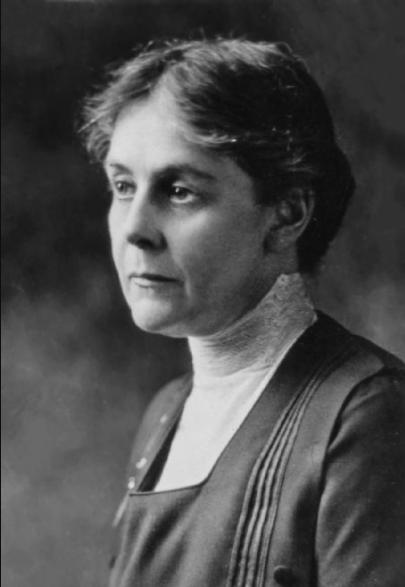Alice Hamilton Death
Alice passed away on September 22, 1970 at the age of 101.
When did Alice Hamilton die?
September 22, 1970How old was Alice Hamilton when died?
101
Alice Hamilton Birthday and Date of Death
Alice Hamilton was born on February 27, 1869 and died on September 22, 1970. Alice was 101 years old at the time of death.
Birthday: February 27, 1869
Date of Death: September 22, 1970
Age at Death: 101
Alice Hamilton - Biography
Alice Hamilton (February 27, 1869 – September 22, 1970) was the first woman appointed to the faculty of Harvard University and was a leading expert in the field of occupational health. She was a pioneer in the field of toxicology, studying occupational illnesses and the dangerous effects of industrial metals and chemical compounds on the human body.BiographyAlice Hamilton was born in 1869 to Montgomery Hamilton and Gertrude Hamilton (née Pond), in New York City, New York and raised in Fort Wayne, Indiana. She was the second of four girls, all of whom remained close throughout their childhood and into their professional careers. Among her sisters was classicist Edith Hamilton. Alice was home schooled and completed her early education at Miss Porter's School in Farmington, Connecticut, as did her sister Edith Hamilton.Alice Hamilton in 1893, the year she graduated from medical schoolHamilton read widely and cited literary influence for inspiring her to become a physician, even though she was uneducated in the sciences: "I meant to be a medical missionary to Teheran, having been fascinated by the description of Persia in [Edmond] O'Donovan's The Merv Oasis. I doubted if I could ever be good enough to be a real missionary, but if I could care for the sick, that would do instead." She studied sciences with a high school teacher in Fort Wayne and at a "little, third rate" medical school. She then enrolled at the University of Michigan Medical School in 1892, and received her medical degree in 1893. She completed internships at the Northwestern Hospital for Women and Children in Minneapolis and the New England Hospital for Women and Children near Boston. During her internships, Hamilton developed interest in public health.At advice of her professors, Hamilton traveled to Europe to study bacteriology and pathology from 1895 to 1897. She was welcomed in Frankfurt, rejected in Berlin, and experienced some opposition at universities in Munich and Leipzig. When she returned to the United States, she continued her postgraduate studies at the Johns Hopkins University Medical School, where she worked with Simon Flexner. In 1897, she moved to Chicago, where she became a professor of pathology at the Woman's Medical School of Northwestern University.Soon after moving to Chicago, Hamilton became a member and resident of Hull House, the settlement house founded by social reformer Jane Addams. Hamilton attempted to identify causes of typhoid and tuberculosis in the surrounding community. Her work on typhoid in 1902 led to the replacement of the chief sanitary inspector of the area by the Chicago Board of Health. Living side by side with the poor residents of the community, she became increasingly interested in the problems workers faced, especially occupational injuries and illnesses. The study of 'industrial medicine' (the illnesses caused by certain jobs) had become increasingly important since the Industrial Revolution of the late nineteenth century had led to new dangers in the workplace. In 1907, Hamilton began exploring existing literature from abroad, noticing that industrial medicine was not being studied much in America. She set out to change this, and in 1908 published her first article on the topic.ImpactIn 1908, Hamilton was appointed by the governor of Illinois to the newly formed Illinois Commission on Occupational Diseases, the first such investigative body in the United States. The commission focused on industrial poisons, with Hamliton leading the investigation. The commission's report resulted in occupational disease laws being passed in Illinois and other states, requiring employers to take safety measures to protect workers.For the next decade she investigated a range of issues for a variety of state and federal health committees. She focused her explorations on occupational toxic disorders, examining the effects of substances such as aniline dyes, carbon monoxide, mercury, tetraethyl lead, radium, benzene, carbon disulfide and hydrogen sulfide gases. Her work on the manufacture of white lead and lead oxide, as a special investigator for the U.S. Bureau of Labor Statistics, is considered a "landmark study". Relying primarily on "shoe leather epidemiology," and the emerging laboratory science of toxicology, she pioneered occupational epidemiology and industrial hygiene in the United States. Her findings were scientifically persuasive and influenced sweeping health reforms, changing laws and general practice to improve the health of workers.External videoJane Addams, Alice Hamilton, and Aletta Jacobs in Berlin, during World War I, Critical PastDuring her years at Hull House, Hamilton was active in the women's rights and peace movements. She traveled with Jane Addams and Emily Greene Balch to the 1915 International Congress of Women in the Hague, where they met Dutch pacifist, feminist and suffragist Aletta Jacobs. Rediscovered historical footage shows Jane Addams, Alice Hamilton, and Aletta Jacobs before the Brandenburger Gate in Berlin on May 24, 1915, to meet government leaders. Hamilton returned with Jane Addams to meet in Zurich in May 1919, after the war.:53–55 With American Quaker Carolena M. Wood, Addams, Hamilton, and Jacobs were involved in a mission to Germany to distribute philanthropic food aid and to investigate reports of famine.:245–255 Although she eventually moved away from Chicago, Hamilton returned to Hull House every year until Jane Addams's death in 1935.In 1919, Hamilton was hired as assistant professor in a new Department of Industrial Medicine at Harvard Medical School, making her the first woman appointed to the faculty there in any field. Her appointment was hailed by the New York Tribune with the headline: "A Woman on Harvard Faculty—The Last Citadel Has Fallen—The Sex Has Come Into Its Own". Her own comment was "Yes, I am the first woman on the Harvard faculty—but not the first one who should have been appointed!" Hamilton still faced discrimination as a woman, and was excluded from social activities and ceremonies.From 1924 to 1930, she served as the only woman member of the League of Nations Health Committee. She published the first American textbook on the subject of Industrial Hygiene in the United States, in 1925, followed by the textbook Industrial Toxicology in 1934. At the 1925 tetraethyl lead conference in Washington D.C. Dr. Hamilton was the most prominent critic of adding tetraethyl lead to gasoline. In 1933, she wrote an article entitled "The Youth Who Are Hitler's Strength," published in the New York Times, on Nazi exploitation of youth between the World Wars.:437 She also criticized Nazi education, especially their domestic training for girls.After her retirement from Harvard in 1935, Hamilton served as a medical consultant to the U.S. Division of Labor Standards, and retained her connections to Harvard as professor emerita. Her autobiography, Exploring the Dangerous Trades, was published in 1943.Recognition and awardsAlice Hamilton received the National Achievement Award of the Chi Omega Sorority in 1935. It was presented by Eleanor Roosevelt. She was included in the list of Men in Science in 1944 and received the Lasker Award for public service in 1947. She was named Time Woman of the Year in 1956. She died at her home in Hadlyme, Connecticut on September 22, 1970. She is buried alongside Clara Landsberg at Cove Cemetery, Hadlyme, Connecticut. Clara Landsberg studied in Munich with Alice and Edith's sister, Margaret, for one summer in 1899. Landsberg was from Rochester, New York, where her father was a Reform rabbi. After graduating from Bryn Mawr, Landsberg also became a part of Hull House and shared a room with Alice. She eventually left Hull House to teach Latin at Bryn Mawr while Edith was headmistress. Alice considered Landsberg part of the Hamilton family: "I could not think of a life in which Clara did not have a great part, she has become part of my life almost as if she were one of us." Margaret later taught English at Bryn Mawr and took over as head of the school when Edith retired.In 1973, she was inducted, posthumously, into the U.S. National Women's Hall of Fame.On February 27, 1987, the National Institute for Occupational Safety and Health dedicated its research facility as the "Alice Hamilton Laboratory for Occupational Safety and Health". The Institute also began giving a yearly "Alice Hamilton Award" to recognize excellent scientific research in the field. In 1995, her contributions to public health were honored by a U.S. Postal Service Great Americans series 55¢ postage stamp. In 2002, Hamilton was designated a National Historic Chemical Landmark in recognition of her role in the development of occupational medicine.In recent years, Hamilton has been heralded as a pioneering female environmentalist. The Division of Occupational & Environmental Medicine at the University of California, San Francisco sponsors an annual lecture named in recognition of Hamilton's achievements in these areas. The American Society for Environmental History annually awards the Alice Hamilton Prize for the best article published outside the journal Environmental History








